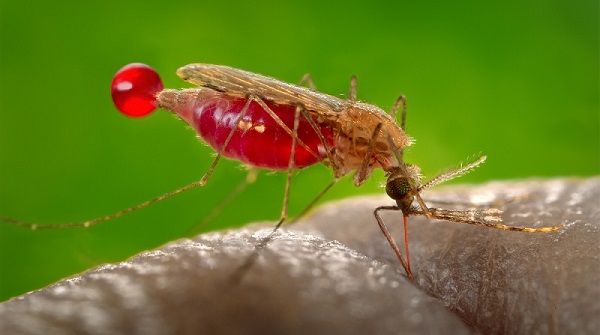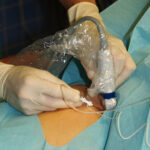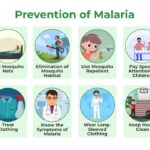Malaria is a life-threatening mosquito-borne disease caused by Plasmodium parasites. It is transmitted to humans through the bite of infected Anopheles mosquitoes. Despite advancements in treatment and prevention, malaria remains a significant public health concern, particularly in tropical and subtropical regions. This article explores the causes, symptoms, diagnosis, treatment, and prevention of malaria in detail.

Causes of Malaria
Malaria is caused by five species of the Plasmodium parasite:
- Plasmodium falciparum (most severe form)
- Plasmodium vivax (relapses possible)
- Plasmodium ovale (relapses possible)
- Plasmodium malariae (chronic infections)
- Plasmodium knowlesi (rare but severe in some cases)
Transmission Cycle
- An infected Anopheles mosquito bites a human, injecting Plasmodium sporozoites.
- The parasites travel to the liver, where they mature and multiply.
- They enter the bloodstream, infect red blood cells, and multiply further.
- Some parasites develop into gametocytes, which can be transmitted back to mosquitoes, continuing the cycle.
Symptoms of Malaria
Malaria symptoms usually appear 10–15 days after being bitten by an infected mosquito. Common symptoms include:
- High fever and chills
- Sweating
- Headache
- Nausea and vomiting
- Muscle pain
- Fatigue
- Jaundice (in severe cases)
- Seizures (in children)
Severe malaria symptoms may include:
- Organ failure
- Severe anemia
- Respiratory distress
- Cerebral malaria (brain swelling)
Diagnosis of Malaria
Malaria is diagnosed through the following methods:
1. Microscopic Blood Smear
- A blood sample is examined under a microscope to detect Plasmodium parasites.
2. Rapid Diagnostic Tests (RDTs)
- Detect malaria antigens in the blood within minutes.
3. Polymerase Chain Reaction (PCR)
- Identifies Plasmodium DNA for precise species identification.
4. Serological Tests
- Detect antibodies but are not commonly used for active infection diagnosis.
Treatment of Malaria
The treatment of malaria depends on the severity of the disease and the parasite species involved.
1. Uncomplicated Malaria
- Artemisinin-based combination therapies (ACTs): The most effective treatment.
- Chloroquine: Used for P. vivax, P. ovale, and P. malariae in non-resistant areas.
2. Severe Malaria
- Intravenous Artesunate: Recommended for severe cases.
- Quinine and Quinidine: Used in some cases but less preferred due to side effects.
- Supportive Therapy: Oxygen, blood transfusions, and fluids as needed.
Malaria Prevention and Control
1. Vector Control
- Insecticide-Treated Bed Nets (ITNs): Effective at reducing mosquito bites.
- Indoor Residual Spraying (IRS): Kills mosquitoes that rest inside homes.
2. Chemoprophylaxis (Preventive Medication)
- Atovaquone-proguanil, Doxycycline, or Mefloquine: Recommended for travelers to malaria-endemic regions.
3. Malaria Vaccine
- The RTS,S/AS01 (Mosquirix) vaccine has shown moderate efficacy in preventing malaria in young children.
4. Environmental Management
- Eliminating standing water and improving sanitation reduces mosquito breeding sites.
Global Efforts to Eradicate Malaria
Organizations like the World Health Organization (WHO), Roll Back Malaria (RBM) Partnership, and the Global Fund are working towards malaria eradication through:
- Research and development of new drugs and vaccines.
- Strengthening healthcare infrastructure in endemic regions.
- Increasing awareness and funding for malaria control programs.
Malaria remains a major public health concern, but with effective prevention, early diagnosis, and proper treatment, its impact can be significantly reduced. Continued research and global collaboration are essential to achieving a malaria-free world.

